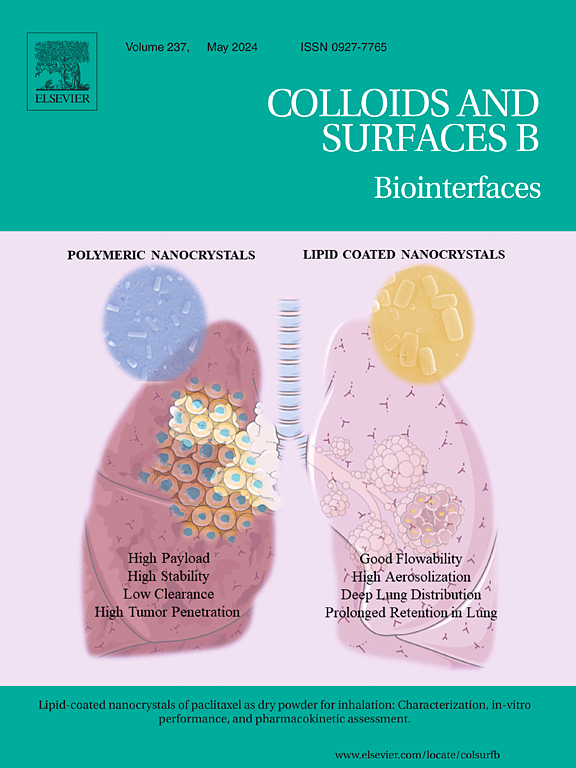A novel NIR-dependent IDO-inhibiting ethosomes treatment melanoma through PTT/PDT/immunotherapy synergy
IF 5.4
2区 医学
Q1 BIOPHYSICS
引用次数: 0
Abstract
Phototherapy is a treatment method that uses the characteristics of different bands of light to treat diseases. Tumor immunotherapy, on the other hand, treats tumors by regulating the body’s immune system. The combination of phototherapy and immunotherapy can significantly enhance the treatment of melanoma. In this study, we prepared and characterized INEs, a novel ethosome composed of the photosensitizer IR251 and the Indoleamine-2, 3-dioxygenase (IDO) inhibitor NLG919. INEs demonstrated excellent phototherapeutic properties, strong phototoxicity, and a notable ability to inhibit IDO. Under 808 nm laser irradiation, INEs effectively induced immunogenic cell death (ICD) in melanoma cells. In vivo experiments demonstrated that INEs injection into primary tumors triggered ICD, promoted maturation of DC cells, and activated naive T cells, leading to the production of effector T cells (specifically CD4+ and CD8+ T cells) that targeted and killed tumor cells. Both primary and distant tumors were treated simultaneously with favorable biosafety. In conclusion, INEs represent a promising strategy for melanoma treatment by a combination of phototherapy and immunotherapy with high safety. This study provides new insights and a theoretical basis for the clinical treatment of melanoma.
求助全文
约1分钟内获得全文
求助全文
来源期刊

Colloids and Surfaces B: Biointerfaces
生物-材料科学:生物材料
CiteScore
11.10
自引率
3.40%
发文量
730
审稿时长
42 days
期刊介绍:
Colloids and Surfaces B: Biointerfaces is an international journal devoted to fundamental and applied research on colloid and interfacial phenomena in relation to systems of biological origin, having particular relevance to the medical, pharmaceutical, biotechnological, food and cosmetic fields.
Submissions that: (1) deal solely with biological phenomena and do not describe the physico-chemical or colloid-chemical background and/or mechanism of the phenomena, and (2) deal solely with colloid/interfacial phenomena and do not have appropriate biological content or relevance, are outside the scope of the journal and will not be considered for publication.
The journal publishes regular research papers, reviews, short communications and invited perspective articles, called BioInterface Perspectives. The BioInterface Perspective provide researchers the opportunity to review their own work, as well as provide insight into the work of others that inspired and influenced the author. Regular articles should have a maximum total length of 6,000 words. In addition, a (combined) maximum of 8 normal-sized figures and/or tables is allowed (so for instance 3 tables and 5 figures). For multiple-panel figures each set of two panels equates to one figure. Short communications should not exceed half of the above. It is required to give on the article cover page a short statistical summary of the article listing the total number of words and tables/figures.
 求助内容:
求助内容: 应助结果提醒方式:
应助结果提醒方式:


